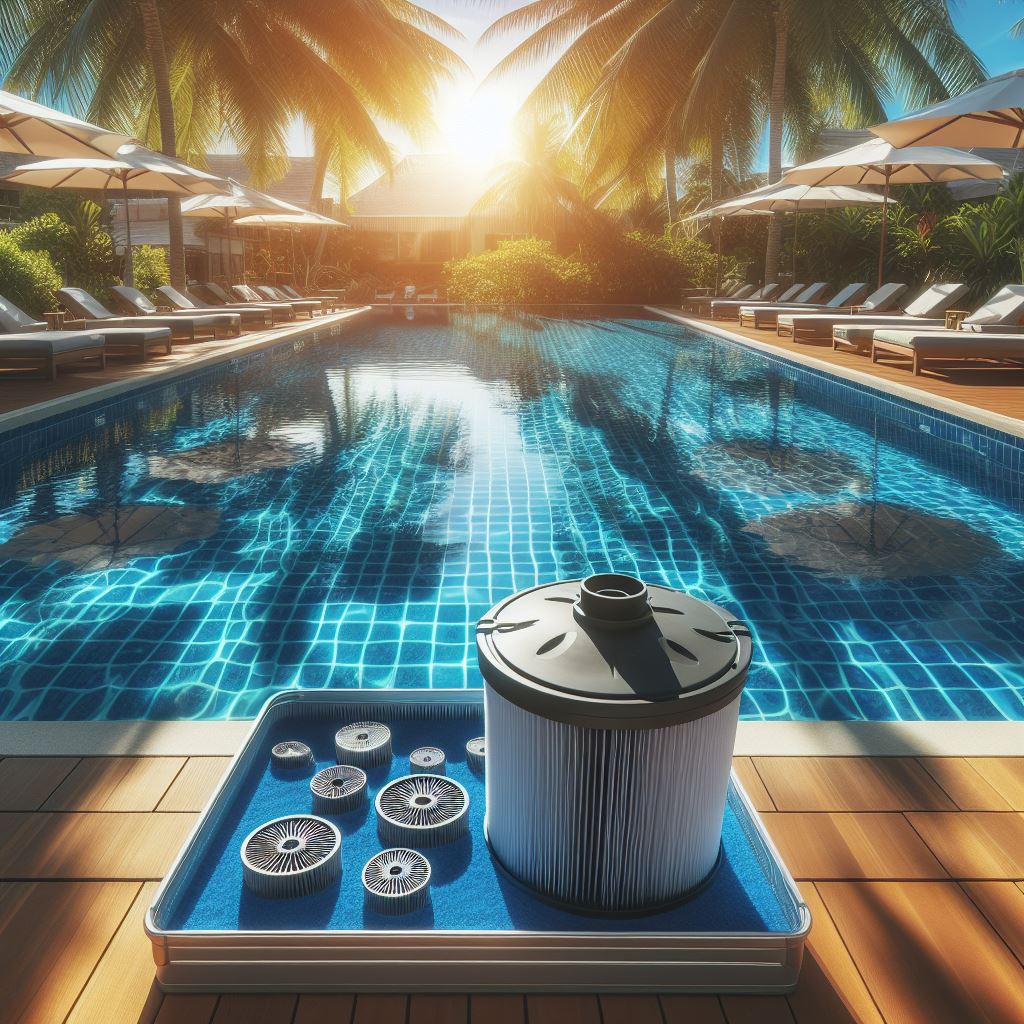As a pool owner, maintaining a clean pool is essential for ensuring safe and healthy water quality. The pool filter pump plays a crucial role in this process. It helps circulate water and filter out impurities and contaminants. So, how does a pool filter pump work? And what should you do when it encounters problems? Today, we’ll explore these questions in detail to help you better maintain your pool.

How a Pool Filter Pump Works
The pool filter pump is the heart of the pool, circulating water through pipes and the filtration system. When the pump is running, water is drawn into the filtration system, impurities are removed by the filter, and clean water is returned to the pool. This process not only keeps the water clean but also helps distribute chemicals like chlorine tablets more evenly, ensuring stable water quality.
Basic Water Flow Process:
- Suction Side: The pump draws water from the pool through the skimmer or main drain and into the suction line.
- Filtration Stage: As water flows through the pump, the force changes from suction to pressure, pushing water into the filter. After the filter, there may also be a heater, chlorinator, or salt system.
- Return Side: After passing through the filter, the water is pushed back into the pool through the return jets.
You may see one or more valves on the pump’s piping. These valves control the amount of water flowing into the pump. If you need to repair the pump or filtration system, you can use these valves to temporarily stop the water flow.
Components of a Pool Filter Pump
Understanding the components of the filter pump helps in troubleshooting issues.
- Pump Lid: The pump lid needs to be completely sealed to prevent air from entering the pump and affecting the suction in the pipes.
- Pump Strainer Housing with Basket: This is where the pool water first enters the pump. The basket collects debris to prevent it from clogging the impeller.
- Drain Plugs: Used to drain water from the pump during winter. There may be multiple drain plugs on the pump.
- Pump Housing with Impeller: This is the main control center housing the impeller, diffuser, and seals. The impeller rotates on the motor shaft, creating a vacuum that draws water from the pool and pushes it towards the filter. If the impeller is clogged or jammed, the entire pump will stop working.
- Pump Motor and Shaft: This is where the motor is located, which drives the impeller to rotate.
How to Choose the Right Pool Filter Pump
Your pool filter pump needs to be powerful enough to draw in and filter all the water in the pool at least once a day. This is known as the turnover rate. Typically, the filter pump needs to run for at least 8 hours a day to filter all the water. To calculate the exact turnover rate, you can use the following method:
- Determine the capacity of your pool (in gallons).
- Divide it by the pump’s flow rate (usually measured in gallons per minute).
For example, if your pool capacity is 15,000 gallons and your pump’s flow rate is 40 GPM, then your turnover rate is 375 minutes, which means it takes over 6 hours to filter all the water in the pool.
Pump Maintenance and Troubleshooting Tips
To ensure the proper operation of your pool filter pump, here are some maintenance and troubleshooting tips:
- Check the Pump Basket: Any debris not captured by the skimmer basket may enter the pump basket. Regularly check and empty the pump basket to ensure it operates correctly.
- Check the Pump Lid Seal: If the pump lid seal is not tight, air can enter the system. Inspect the O-ring on the lid for cracks or damage, and replace it if necessary.
- Check Pump Connections: Any loose connections can introduce air into the system. Regularly inspect the joints and connections between the pump and pipes to ensure they are secure and not leaking.
- Maintain Proper Water Level: Ensure the water level is at least halfway up the skimmer. If the water level is too low, the pump may suck in air, leading to overheating and dry running.
- Regularly Clean Skimmer Basket and Filter: Ensure that water can flow freely through the skimmer and filter. Empty the skimmer basket weekly and backwash or clean the filter when the pressure rises.
- Check Skimmer Lines: Sometimes debris can get stuck in the skimmer lines, blocking water flow to the pump. Regularly inspect and clear any blockages in the skimmer lines.
What to Do When Your Pool Filter Pump Has Issues
If your pump is not working properly, here are some common issues and solutions:
- Low Water Flow: You may need to prime the pump. After shutting off the pump, use a garden hose to fill the pump with water for 2 to 3 minutes, then quickly reseal the pump lid and restart the system.
- Air Leak Detection: Apply shaving cream around potential leak areas. If there is a leak, the air will draw in the shaving cream, leaving indentations.
- Motor Issues: If the pump is not running and making a humming sound, the motor might be the problem. Try resetting the breaker and check if the impeller is stuck.
Other Methods to Keep Your Pool Clean
Besides using a pool filter pump, here are other methods to help keep your pool clean:
Using Chlorine Tablets: Chlorine tablets are an effective way to maintain a stable chlorine level in the water. Place the tablets in a floating chlorinator or a dedicated chlorine tablet dispenser to continuously release chlorine and keep the water clean.
Pool Sand Filter: A pool sand filter is a common filtration device that uses a layer of sand to filter impurities from the water. It is effective and easy to maintain.
Pool Filter Balls: Using pool filter balls is an efficient and economical filtration method. Filter balls can effectively capture impurities and particles, further enhancing pool cleanliness.
Regular Shock Treatment: Periodically performing a shock treatment can quickly raise chlorine levels in the water, killing bacteria and algae.
By combining these methods, you can effectively maintain the cleanliness and safety of your pool water. Regularly maintaining and checking your pool equipment and ensuring the proper operation of the filter pump will help you easily manage your pool and enjoy a clear and safe swimming environment. We hope this information helps you better understand the role and maintenance of pool filter pumps, keeping your pool in optimal condition at all times.
